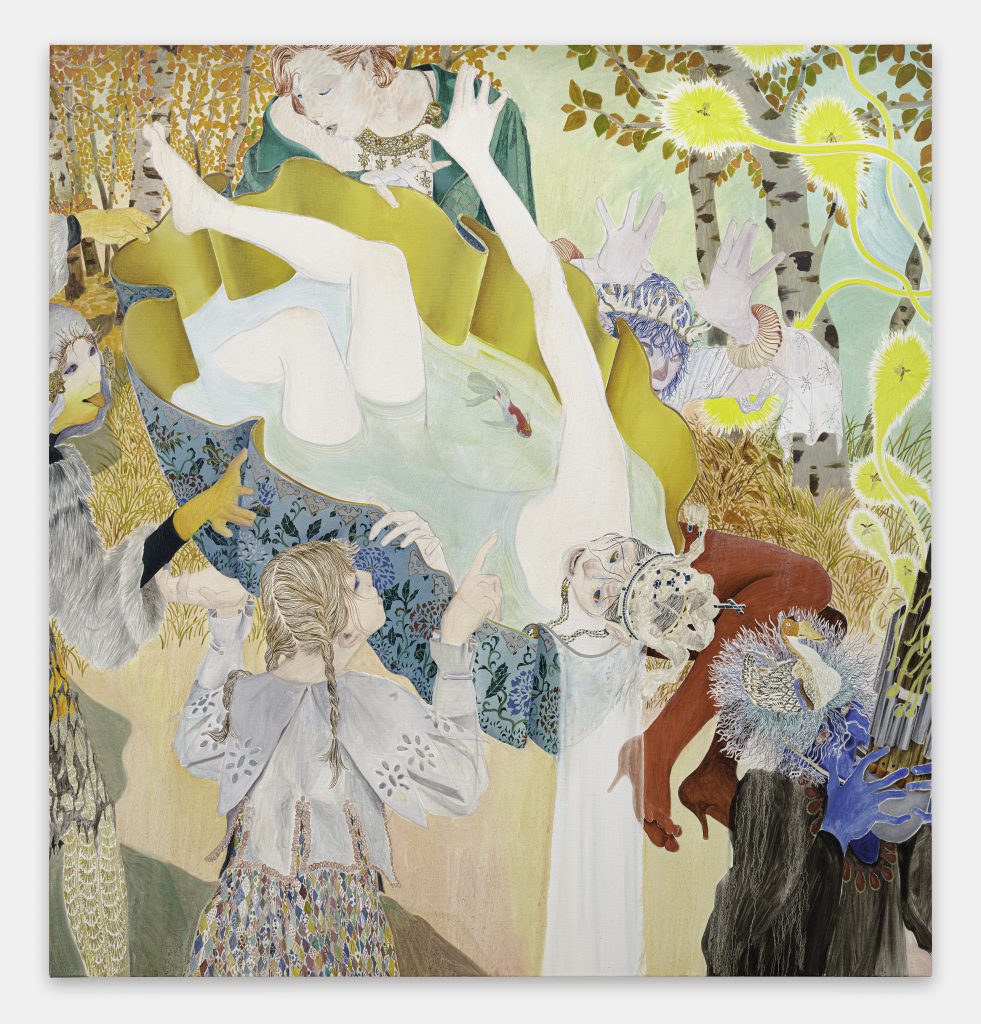Ding Shilun (b. 1998) lives and works between London and Guangzhou. Shilun harnesses his heritage, current events and a global history of art to create large and detailed pictorial works depicting the absurdity of daily life. His unique concurrence of the mythological, the historical and the everyday allow the emergence of an imaginary world with a representation of himself within our seemingly homogenous society.
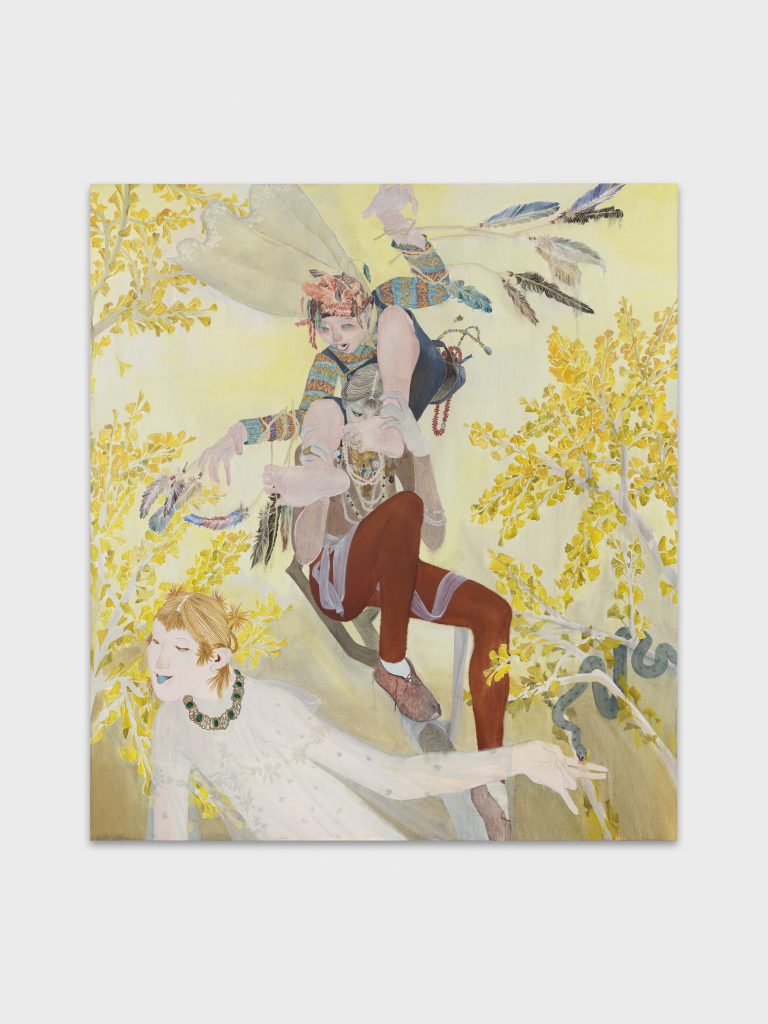
Tell us a little bit about yourself. Where are you from originally and when did art first enter your life?
I was born and raised in Guangzhou, China and currently base in London, I have just finished my MA at RCA in 2022. My father painted, I would say in my memory he was the first person who inspired me to paint, but I didn’t see drawings and paintings as ‘art’ when I was a kid. I think maybe the first ‘art moment’ for me was when I first watched an Antoni Gaudí documentary on TV, I was blown away by the energy of his works.
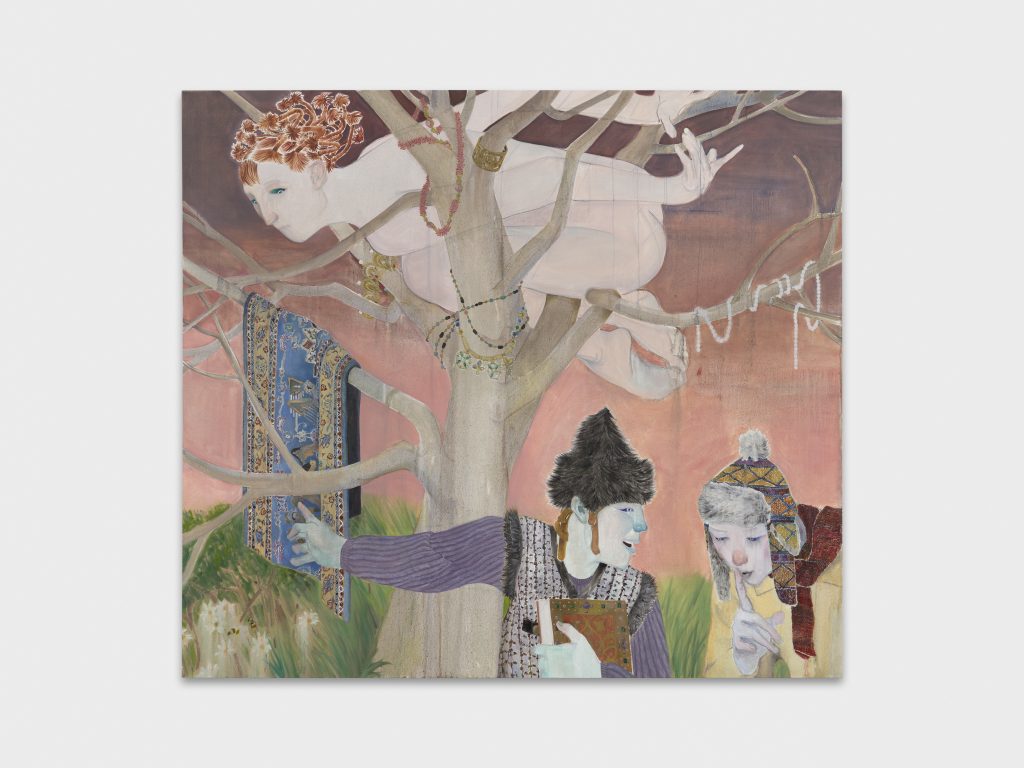
Has your work always taken on the style it currently embodies?
The style changes as my observation method changes. I used to be very greedy in the way I observed, so my painting style seems like an unorganized images collection. Lately I become more specific about things, the way I create is more like completing a jigsaw puzzle.
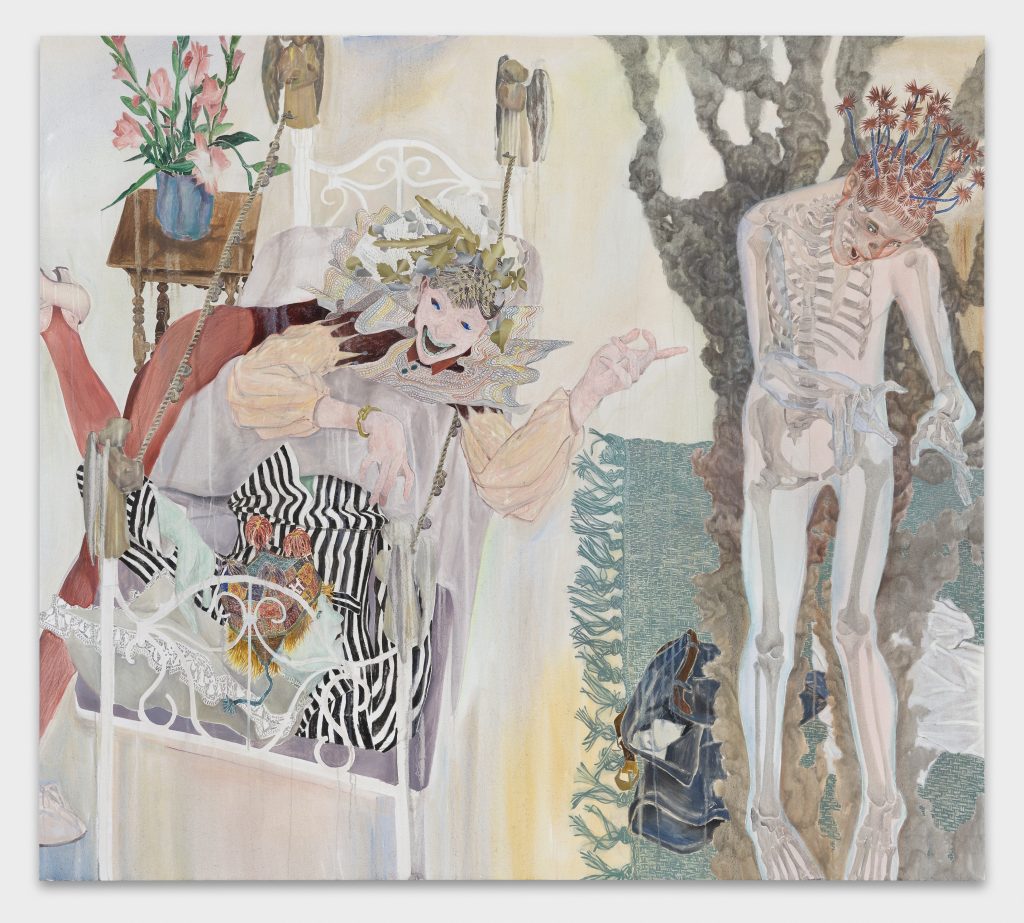
What’s a day in the studio like for you?
I preferred working in the evening so that I normally get to the studio around 1pm, and then start working until 10 to 11pm in evening.
What’s next for you?
At the moment I’m preparing for a show in the project space at GDMOA in Guangzhou China. Then back to London we are planning a project with Zabludowicz Collection in September and I will do a show with Galerie Maria Bernheim end of this year.
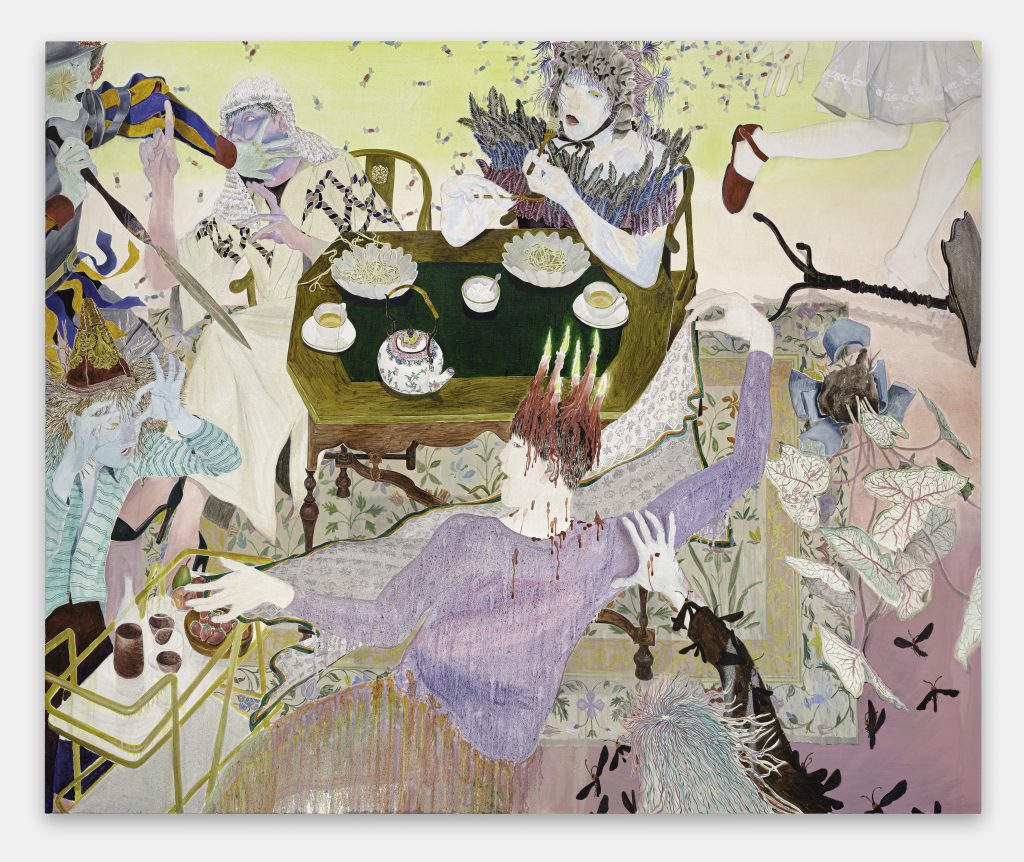
From where do you draw inspiration?
Inspiration always comes from ancient Asian mythologies, historical events, today’s news and manga. History is a circle that goes round and round, my practice focuses on analyzing events with similar structure in human history, by constructing one impossible scenario after another, I try to outline the reality under the layer of the world of spectacle.
Have you always painted in the style your work currently inhabits?
My practice has been developing all the time. In order to avoid the directivity brought by the figure, I used to avoided placing the characters in the printings, and carefully depicted the daily objects related to me and the empty scenery around me. This loneliness of storytelling is dispelled now, so I will no longer escape from the presence of figures.
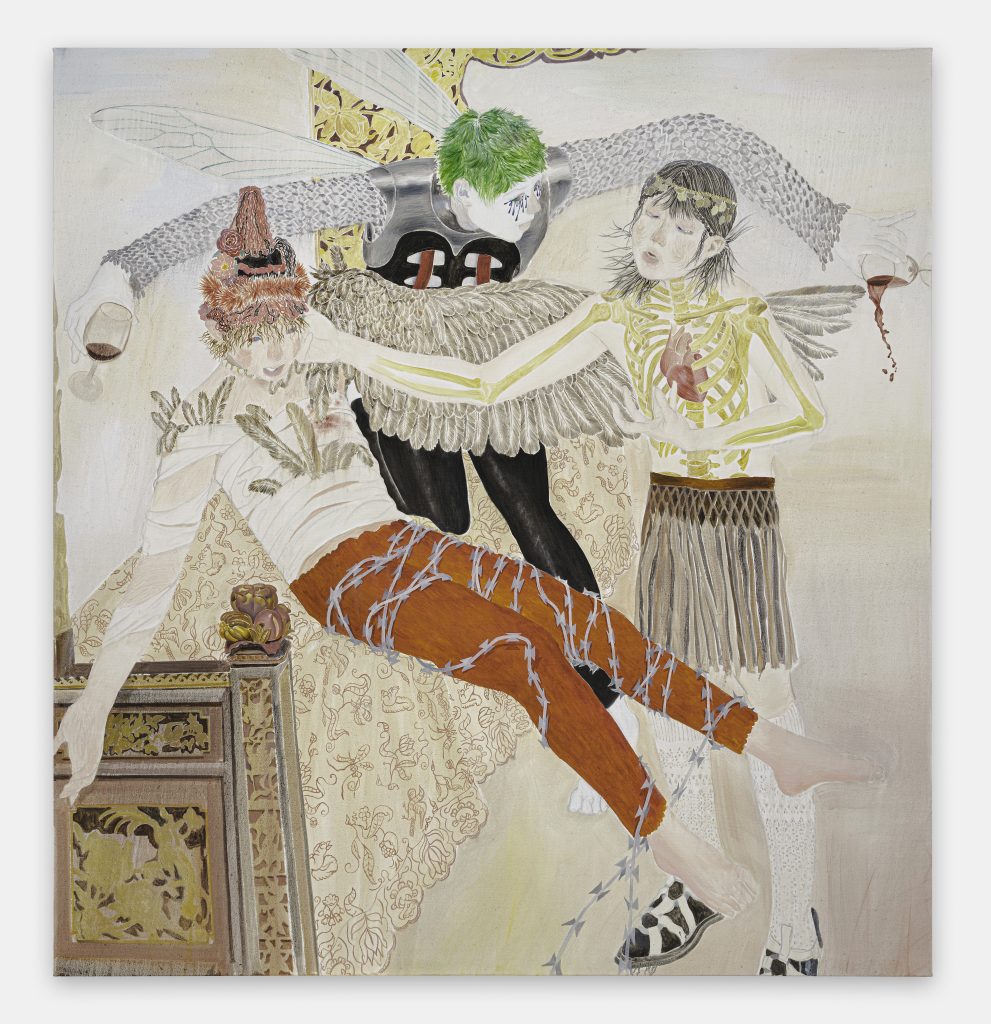
What source material do you base your work off of?
I rely on my feelings and memories, and the relationship between personal experience and history, conflict in intimate relationships.
Does your work reference any Art Historical movements?
I don’t know if it counts, but I think I’m more influenced by the art of the Silk Road period. The exchange and integration of different cultures produced many interesting costumes, patterns and adornments. I like to study them and then invent something different, these new inventions sometimes look funny and you can try to find them in the paintings.
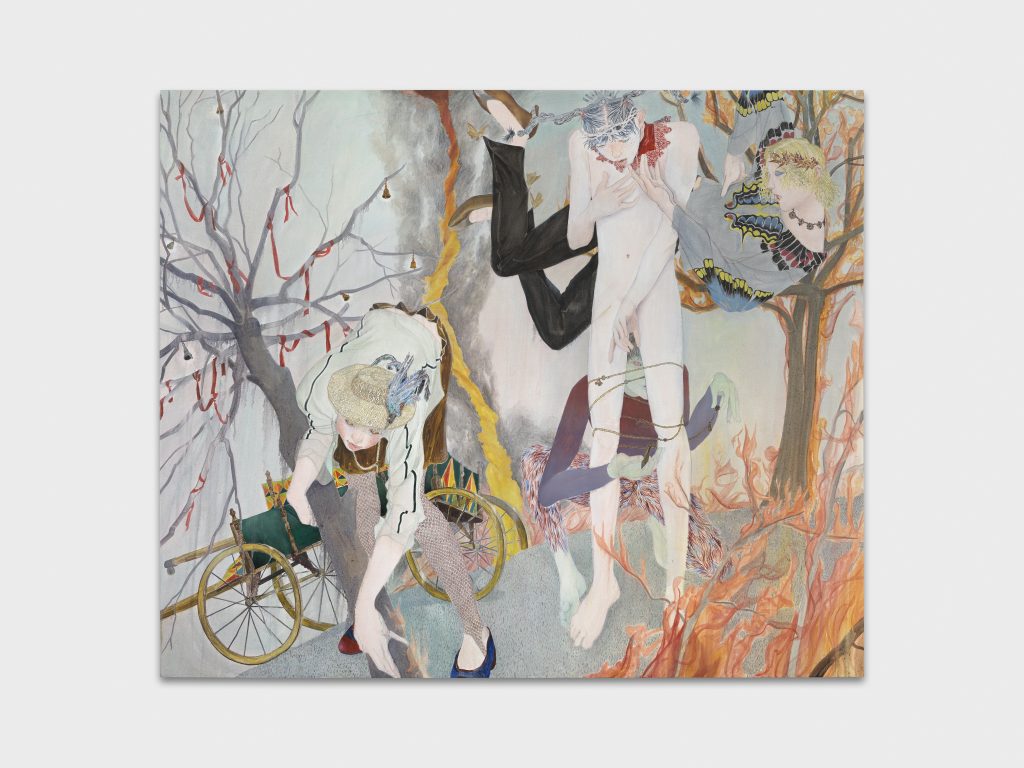
What is your process like? How do you begin a work?
Most of the thoughts come from my reflections on nowadays conflict within the global context, usually a complex set of negative emotions, shock or fear at some events that are happening, and then I start to draw sketches after I have these basic emotions. I usually can’t plan them very accurately or use Photoshop to do anything beforehand, because the fun part of the game is to create as many mistakes as possible in the process, and eventually I will make it seems like a misbehaving child: I try to whitewash all mistakes to make them seem natural, so that no one can point them out.
At the end of every interview, we like to ask the artist to recommend a friend whose work you love for us to interview next. Who would you suggest?
I would recommend Faust Luo, he is a close friend of mine and one of my favorite photographers.
